Tag: cardiology
Pulmonary Hypertension: Basic Science to Clinical Medicine
This book provides the framework for a singular reference in the field of pulmonary hypertension. Pulmonary vascular disease is a complex and heterogeneous condition characterized by remodeling of distal pulmonary arterioles... read more

Cardiovascular Complications of COVID-19: Acute and Long-Term Impacts
This book is the first comprehensive approach on COVID-19 cardiac complications, both during the acute phase as well as in the long-COVID period. It provides an up-to-date and highly illustrated summary of the biology... read more
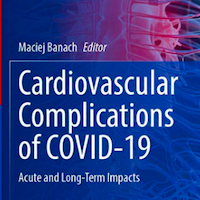
Blood Glucose and Clinical Outcomes After ECC
Postoperative blood glucose levels significantly impact outcomes in cardiac surgery patients undergoing extracorporeal circulation (ECC) auxiliary to open heart surgery. The study's primary outcome was the 90-day mortality,... read more
Vasoactive Agents in Cardiogenic Shock Related to AMI and ADHF
Cardiogenic shock (CS) is a heterogeneous condition associated with exceptionally high mortality rates, despite significant advances in the field of cardiology. The primary causes of CS are myocardial infarction-related CS... read more
ICU Protocols: A Step-wise Approach, Vol I
The second edition of this highly successful book includes up-to-date notes on the step-wise management of clinical emergencies encountered in everyday intensive care units (ICU). Each thoroughly revised chapter provides... read more

Textbook of Neonatal Resuscitation
Powerful resource for interactive, simulation-based teaching and learning! The Neonatal Resuscitation Program (NRP) is an educational program jointly sponsored by the American Academy of Pediatrics (AAP) and the American... read more
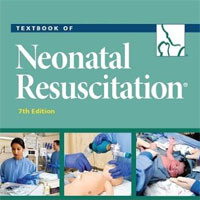
Decision Support Tool in the Prehospital Setting for Acute Chest Pain
Using the Atellica VTLi in the EMS setting for the analysis of troponin I in acute chest pain patients is feasible. However, the instruments are unfamiliar for most EMS personnel, and a break-in period should be allowed for... read more
Textbook of Cardiorenal Medicine
This textbook provides a practical and board-driven resource to describe and define the emerging field of cardiorenal medicine. Covering all aspects of the topic with depth and relevance, this groundbreaking reference brings... read more
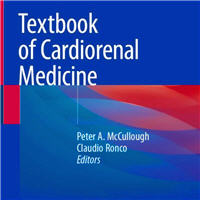
Ketamine May Reduce Opioid Requirements Following Cardiac Surgery
Ketamine may be a reasonable choice for postoperative cardiac surgery analgesia and may reduce the need for opioids on discharge, and possibly during admission. This study is a single center, retrospective, observational,... read more
Cardiac Damage in Patients Infected with Different COVID-19 Variants of Concern
Coronavirus Disease 2019 causes significant morbidity, and different variants of concern (VOCs) can impact organ systems differently. We conducted a single-center retrospective cohort analysis comparing biomarkers and... read more
A Perspective on Post-Cardiac Arrest Syndrome
This book presents a valuable new perspective on Post-Cardiac Arrest Syndrome (PCAS), which was defined as system failure following whole-body ischemia-reperfusion injuries by the 2008 International Liaison Committee on Resuscitation.... read more

Practical Issues in Anesthesia and Intensive Care
The contents of this book are a selection taken from materials that have been developed during the preparation of continuing education courses (distance learning), whose scientific advisor is the volume editor, Professor... read more

ICU Manual
This practical guide provides a multidisciplinary, clinically oriented approach to the management of patients in intensive care. The book discusses the complete range of specialties, including cardiology, pulmonology,... read more
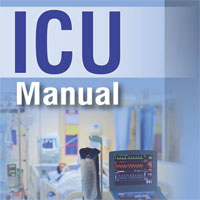
Outcomes for Mechanically Ventilated Patients with Acute Myocardial Infarction Admitted to Medical vs Cardiac ICUs
In this multicenter, national analysis of ICU admission for critically ill patients with AMI, we found that admission to the Cardiac Intensive Care Unit (CICU) was associated with lower in-hospital mortality than patients... read more
Cardiac Index and Heart Rate as Prognostic Indicators for Mortality in Septic Shock
Our retrospective study shows that monitoring cardiac index and heart rate in patients with septic shock may help predict the organismal response and hemodynamic consequences, as well as the prognosis. Thus, healthcare providers... read more
Inhaled Epoprostenol Compared With Nitric Oxide for Right Ventricular Support After Major Cardiac Surgery
Right ventricular failure (RVF) is a leading driver of morbidity and mortality after major cardiac surgery for advanced heart failure, including orthotopic heart transplantation and left ventricular assist device implantation.... read more
Outcomes and Characteristics of Cardiac Arrest in Children with Pulmonary Hypertension
In this prospective study of children who received CPR in intensive care units, a pre-existing diagnosis pulmonary hypertension was present in 16% of children but was not associated with statistically significant differences... read more
Manual of Cardiac Intensive Care
Addressing the changing needs of clinicians in today’s CCU, ICU and CICU, Manual of Cardiac Intensive Care is an easy-to-use, point-of-care reference for cardiologists, intensivists, physicians, trainees, and other health... read more

Endoscopic Cardiac Surgery: Tips, Tricks and Traps
This book is unique in describing the practical considerations of endoscopic cardiac surgery. It covers this topic from basic concepts such as patient selection to imaging and outlines the different approaches to particular... read more
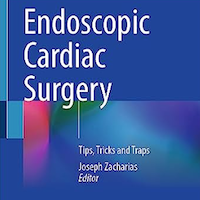
Pulmonary Artery Catheter Use and Mortality in the Cardiac ICU
The appropriate use of pulmonary artery catheters (PACs) in critically ill cardiac patients remains debated. There is wide variation in the use of PACs that is not fully explained by patient level-factors and appears driven... read more
TEE Before Cardioversion in Atrial Fibrillation Patients
Transesophageal echocardiography (TEE) offers an invaluable, non-invasive avenue for diagnosing and managing various cardiac conditions, including atrial fibrillation (AF). As the most common cardiac arrhythmia, AF affects... read more
Cardiovascular Subphenotypes in ARDS
Latent class analysis (LCA) of transthoracic echocardiography (TTE) parameters identified four cardiovascular subphenotypes in acute respiratory distress syndrome (ARDS) that more closely aligned with circulatory failure... read more









